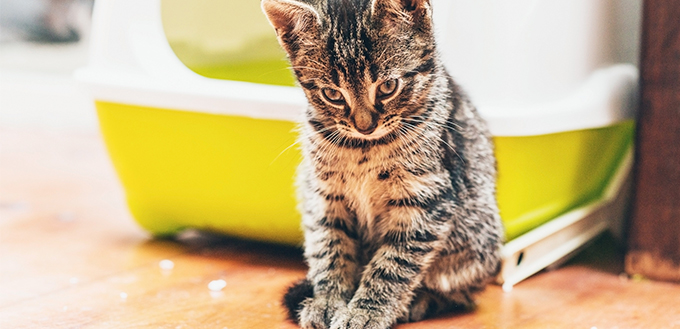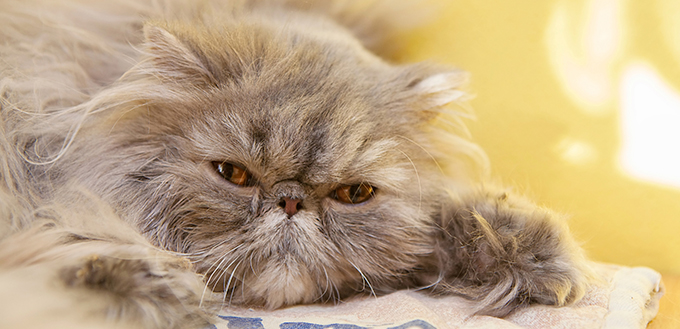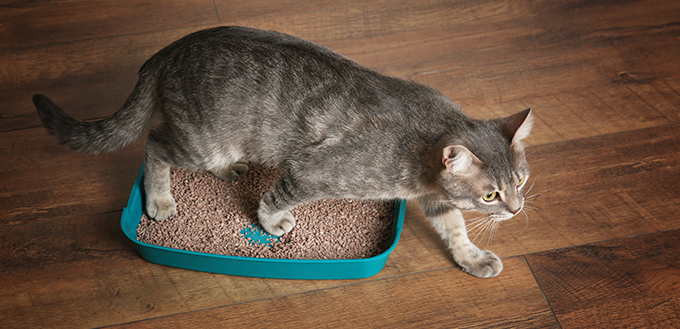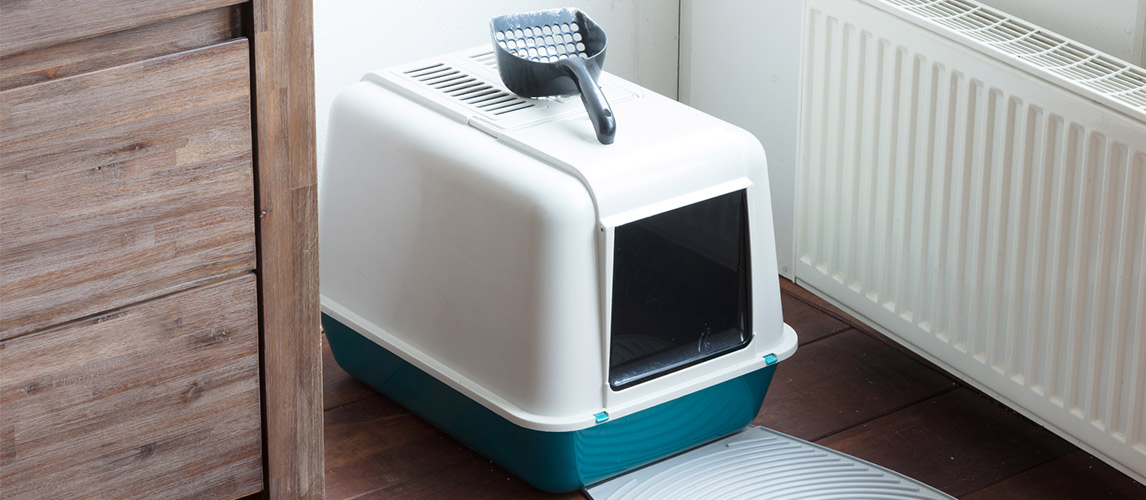When we think of internal health, we often only think of the stomach, kidneys, lungs, heart, and even liver but it is very rare for us to think about the bladder. However, bladders do play a significant role in maintaining good health in humans as well as animals.
Most of us already know the basics of how our bladder works, i.e. filtration, but how exactly does this organ ensure a healthy life for your feline? The bladder-related issues can sometimes create severe problems in your cat’s behavior.
Hence, here’s all you need to know about your cat’s bladder system.
Related Post: Best Cat Food for Kidney Disease

How Long?
According to experts, cats can go on without peeing somewhere between 24 – 48 hours, even if they have drunk enough fluids and taken their daily meal. Typically, indoor felines should have access to their litter box all the time for them to relieve themselves.
Related Post: Best Litter Boxes For Cats
A cat’s bladder is always functioning. However, if a cat holds pee for more than 48 – 72 hours, it might be at serious risk of injury or death as the toxins are building up. If you plan on traveling with your cat, it is recommended that you take them out of their carriage every six hours so that they can empty their bladder.
Related Post: Best Self-Cleaning Litter Boxes
Blockage
By blockage, we mean that cats’ urinary tract might get obstructed due to several reasons. In any case, if that happens, the cat will only be able to live for about another 72 hours. Male cats are prone to get diagnosed with urinary tract blockage than females.
The blockage usually happens from crystalline-like minerals or thick mucus. It can happen from feline lower urinary tract disease (FLUTD), urethritis, or cystitis. All of these three conditions have one same symptom, and that is they would stop urinating, however, in the case of FLUTD, the signs are more profound. Your feline may cry out while urinating, pass blood, skip the litter box or constantly lick their genital area. If your cat suffering from FLUTD and doesn’t get immediate vet attention, he or she might go into a coma, and that could result in death.
Fasting
Did you know? A cat can survive a voyage without water and food for a month? Not sure whether you have heard the story of Emily, but she survived a long trip in a shipping container from Wisconsin to France. Surprisingly, after her discovery, she was thirsty, yet alive! Although she must have urinated throughout this time, it has not been discovered how long a cat can go without peeing while they are not given any food or water. But it’s safe to assume that the volume of the urine will be less as there won’t be any fluid or food left in their body that needs filtering.
How to Help Cat Relieve Their Bladder
There is one technique that is very popular among cats, and it’s called the Ragdoll technique. In cases when the cat needs to empty their bladder, cat owners can use this method to help their kitties.
This technique is relatively simple. What you need to do is hold your kitty by his armpit in a way so that his legs hangover to the litter box. You can even take your kitty outdoors, but a litter box is obviously a better option. If your kitty doesn’t cooperate, calm him down. Rub his back, pet him and try again.
If that doesn’t help, you will need to find his bladder. Yes, you need to do that. To find the bladder, you will have to reach the bottom of your kitty’s rib cage. You will feel something small and squishy, perhaps, a ball-shaped thing.
If you can’t seem to find the bladder, fret not! Your cat’s bladder is perceived to move about from the bottom of its rib cage to the side. Anyway, try again. And if it fails this time, you’ll really need to wait until your kitty has to pee because that’s when the shape of his bladder would change.
Luckily, if you find your cat’s bladder, use your fingers to gently squeeze it and press it downwards. This might help your cat is relieving himself.
This is what the Ragdoll technique is all about; easy to perform. Although it takes a little patience to get a hold of it, the method is tried and tested.

My Cat is Not Cooperating
When does your cat cooperate? Almost never. When it comes to doing anything about command, your cat will just ignore you. You may be thinking that you and your cat have enough trust in each other, but there are scenarios when your cat does not adhere to what you have to say.
Therefore, focus on making him believe that you’re there to help him, and that way you can build more trust. And always be calm and patient when dealing with your cat. Rub your cat’s back and neck so that he doesn’t get anxious.
Hold your cat gently. Too much pressure on your cat might result in him scratching you. Take rest, if needed, between the attempts. Above all, ensure that your cat is comfortable at all times.
Use Stimulation
If it seems like all the techniques mentioned above fail, then there is one method, and that is stimulation. That’s mainly done in female cats.
In some rare cases, you might need to go the extra mile. This is so that you may need to rub your cat’s inner thigh and lower belly. It helps them to relax. You will be able to notice the comfort in them. Add a little pressure when rubbing. This is just to help your cat express his or her bladder.
My Cat is Just Peeing Too Much
By too much, we mean too often.
Peeing frequently but in small volumes doesn’t actually mean that your cat is peeing too much. This condition is referred to as oliguria. This happens when the kidneys form decreased volumes of urine, or there is reduced elimination of pee from the cat’s body. In short, they can fully urinate at once and therefore keep peeing in short periods.
On the other hand, in some cases, your cat may be suffering from polyuria. This is when your cat will urinate larger volumes of urine. Larger in the sense that the frequency of your cat going to the toilet is more than usual. This could be their body’s problem to regulate urine. Often, this indicates that the cat may be suffering from kidney disease. Other hormonal disorders like diabetes or hyperthyroidism result in causing too much water to be expressed as urine.
Interesting Things to Know About Your Cat’s Bladder and Urination
- Bladder Issues Differ As Per the Gender of Your Cat
The bladder is mostly the problem of the urethra. This is the tube that carries the urine from the bladder to their penis or vaginal opening. It’s the male cats who often suffer from urethral blockage as their urethra tends to be narrower. Sometimes stones can form and block their urethra, which then poses serious health risks as the urine cannot pass through the bladder. In unfortunate cases, it may result in death if left untreated.
- Your Cat May Need Some Help to Empty Their Bladders
As we mentioned some techniques earlier, you may need to make use of the methods to help your feline in emptying their bladder. Sometimes they might not be able to urinate on their own. The reason behind this could be paralysis. Therefore, you must take note of this and help them in expressing themselves.
- Cat’s Bladder Health Depends on Their Diet
When it’s about internal organs, it all depends on their genetics. You also have a role to play when it comes to optimizing your cat’s health. Have you been feeding a proper diet to your cat? Good. Some diets alkalinize the urine, and that results in crystalluria in the bladder.
- Cleaning the Litter Box has Something to do With Their Urination
Be sure that something that your cat hates is a stinky litter box. They will keep holding their urine unless and until their litter box is entirely clean odor-free. Therefore, you need to keep your litter box clean, especially if it stays covered most of the time.
If your cat is urinating right outside the litter box, it means that the environment inside is not suitable for him. Cats are quite smart, and they don’t want their paws to get dirty by entering the litter box.
It’s the same mechanism as when you would enter a public toilet and find it to be dirty or unflushed, you would move to the next stall. You must be aware of the bacteria and parasites present in the nasty stuff, and you don’t want to be exposing yourself to it. Cats are no different from it.
You may also like our guides on the Best Cat Litter and Best Cat Litter for Kittens.
- Obesity Affects Bladder
Obesity is prevalent in cats. It is generally associated with their heart and can pose to have significant adverse effects on their bladder. More often than not, unnecessary weight gain is likely to cause incontinence in cats, resulting in the cat not peeing properly. Fortunately, it can easily be rectified by bringing down your cat’s weight to an appropriate level.

How Often Should a Cat Urinate in 24 hours?
There’s no particular frequency between the hours when your cat should empty their bladder. Most cats go to the toilet every 8 – 12 hours. If they don’t go to the bathroom within this time range, they might be suffering from a health issue or infection. It could also be because of some blockage that’s preventing them from urinating frequently.
If you wish to keep track of your cat’s urine routine, merely check their litter box. Too little or too much urine could be indicating health problems. On average, your cat is supposed to produce 3 fist-sized globs of litter in its box every day.
How to Deal with a Cat That’s Not Peeing in its Litter Box
Here’s how you can help your cat urine inside their litter box:
- Place the box in their preferred area
- Use a litter box that is large enough to accommodate your cat
- Place the litter box in a low heightened area so that your cat can have better access to it
- Clean the litter box frequently using baking soda
- Consider emptying their litter box at least once a day
How to Treat Urinary Problems the Right Way in Cats
Cats often get stressful and urinating due to stress is not an abnormal behavior either. Therefore, if you suspect that your pet cat has been stress urinating, the key is to find out the root cause of this stress. Consult your vet and talk about the environmental triggers that may be bothering your fluffy friend.
If it’s a bacterial infection that’s causing urinary problems, your holistic vet will need to perform a bacterial culture on your cat’s urine to rule it out. Although it’s quite rare for cats to have such infections, unfortunate cases do happen.
Another problem is a urethral obstruction or bladder stones that may block their bladder. In that case, you will need to bring about a change in their diet, that of course, after consulting your vet.
Bottom Line
To conclude it all, we’d say that cats can go long hours without urinating or drinking water. Normally, they can even hold their urine for up to forty-eight hours. Anything beyond that should be taken seriously.
Make use of the techniques mentioned above. You may even ask your vet for possible solutions and techniques. However, if you are not sure about your feline’s incontinence, it’s always better to get an expert’s advice.
One more thing to remember is that your cat should relieve themselves at least four times a day. Stick to a routine and prepare your cat accordingly from a very young age. Training is the key!
Be patient with your cat as they are a part of your family too and share this article and help a friend, who might be facing any similar problem with their cat.
Related Post: Best Cat Litter Mat
Sources:
- Dr. H. Ellen Whiteley, How to Treat Common Cat Diseases, HowStuffWorks
- Feline Lower Urinary Tract Disease, American Veterinary Medical Association
- Caring for an Incontinent Cat, Best Friends Animal Society
Leave a reply
Note: The advice provided in this post is intended for informational purposes and does not constitute medical advice regarding pets. For an accurate diagnosis of your pet's condition, please make an appointment with your vet.







Great news here